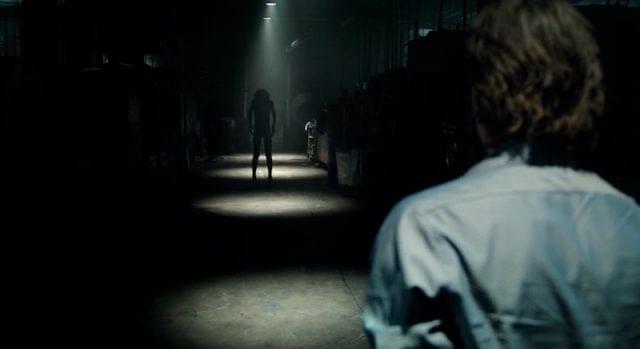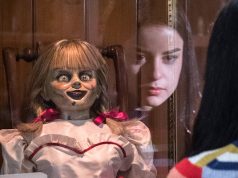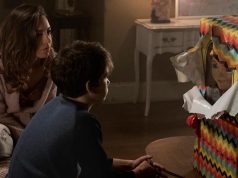
“Lights Out,” David F. Sandberg’s 81-minute expansion of his 3-minute short, has a fine premise for a 3-minute short. Heck, you could even flesh it out to 10 or 15. This feature-length version, though, has a rushed, half-baked air to it, long enough to qualify as a feature yet somehow still short on story, character, and detail.
It’s small in scale, with only three major roles and a couple of hangers-on. Sophie (Maria Bello) is a depressed, bedraggled recluse whose troubling behavior — she talks to an invisible friend named “Diana” — has begun to take its toll on her young son, Martin (Gabriel Bateman). Sophie’s semi-estranged twentysomething daughter, Rebecca (Teresa Palmer), intervenes to protect her brother, recalling her own scary dealings with “Diana” when she was his age.
Diana is real, by the way. We learn that in the first five minutes. She’s a spindly, wraith-like shadow-creature who can inflict actual physical harm in the dark but disappears in the light. No lights, there she is. Turn the lights on, she’s gone. Turn the lights off again, she’s back, only now she’s closer. Sandberg gets a lot of mileage out of this spooky trick, but it’s the only one he’s got.
When it comes time for Rebecca to learn Diana’s origins, the movie gets especially lazy: Mom has a box of evidence in her house, complete with psychiatrists’ tape recordings and photos, spelling everything out. This convenient box o’ evidence isn’t even hidden; it’s just sitting in the study, a well-lit room that Sophie clearly uses regularly. (Later, Sophie demands to know where Rebecca found a particular photograph — one that was pinned to the wall in that very room.)
The screenplay is by Eric Heisserer, who has several lackluster sequels and remakes under his belt, including “The Thing,” “A Nightmare on Elm Street,” and “Final Destination 5.” What he delivers here feels like a first draft; you can practically hear the typos. Now and then the film makes a feint at being a metaphor for depression or abusive relationships, but neither idea is explored meaningfully. Likewise, the “rules” governing Diana and her powers are unclear and inconsistent. Other details, like Rebecca’s aversion to commitment with her boyfriend (Alexander DiPersia), are similarly distracting and undercooked.
But is the movie scary? A little bit, a few times. Not much. Like about 75% of PG-13 horror films, it seems destined to play at teenage slumber parties and other gatherings of low-expectation viewers. That’s not a recommendation, but it’s not a condemnation, either. I’ve seen worse.
C (1 hr., 21 min.; )





